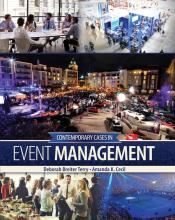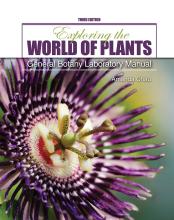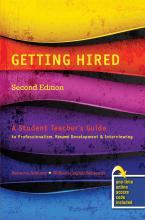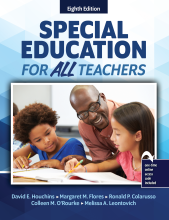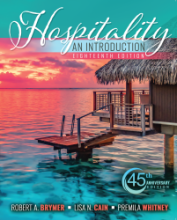Your Career Planner
Author(s): Cheryl L Bonner, Susan Musich
Your Career Planner was designed with an APP in mind – it is a tool, it is a self-contained program, and it is user friendly. This text is meant to provide you information and give you ways in which to put that information to use.Completely redesigned in a new 11th edition, Your Career Planner guide...Contemporary Cases in Event Management
Author(s): Deborah Breiter Terry, Amanda K Cecil
Contemporary Cases in Event Management is a collection of 14 case studies. Featuring a wide variety of cases involving Government Meetings, Trade Shows, Association Meetings, PRIDE Gatherings, and more, this case collection is the perfect accompanying text to any Event Planning and Management course...Humanity, Diversity, and The Liberal Arts: The Foundation of a College Education
Author(s): Joseph B Cuseo, Aaron Thompson
Summer reading programs for first-year students should be focused on the needs of those students. This book moves away from the paradigm of using general audience novels for summer reading programs. It is a high-impact book written by experienced first-year educators for this specific student audien...Exploring the World of Plants: General Botany Laboratory Manual
Author(s): Amanda Chau
Exploring the World of Plants: General Botany Laboratory Manual by Amanda Chau:Is an excellent companion to Introductory Plant Science. Lab exercises are arranged to complement the lecture materials and provide hands-on experience to enhance student understanding of plant biology.Each lab exercise h...Restaurant Management: A Best Practices Approach
By: Frederick DeMicco, Cihan Cobanoglu, Joseph Dunbar, Robert Grimes, Chen Chen, James R Keiser
about product
Restaurant Management: A Best Practices Approach
Author(s): Frederick DeMicco, Cihan Cobanoglu, Joseph Dunbar, Robert Grimes, Chen Chen, James R Keiser
The Recipe for Success in Restaurant Management…Restaurant Management: A Best Practices Approach introduces the reader to the vast menu of opportunities available in the restaurant industry - from creating business plans to guest service, quality management, labor costs and beyond.Written by a diver...about product
Getting Hired: A Student Teacher's Guide to Professionalism, Resume Development and Interviewing
Author(s): WILLIAM COGHILL BEHRENDS, REBECCA ANTHONY
This book targets the primary goals of any student teaching program -- professionalism, interviewing, and getting hired. Getting Hired is designed to accompany a student teaching experience and provides step-by-step guidance through student teaching, interviewing, and into a job.This book is set up ...Medical Communication: Physical and Psychological Wellness
Author(s): Theodore A Avtgis, Kevin Wright, Veronica Nuzzolo
New Third Edition Now Available!Communication-related issues lead to thousands of deaths annually.The third edition of Medical Communication: Physical and Psychological Wellness creates a more health-conscious society by presenting unique and groundbreaking perspectives on communication in the pract...Law for Recreation and Sport Managers
Author(s): John Wolohan
Since 1997, Law for Recreation and Sport Managers has been the leading recreation and sports law book for undergraduate and graduate sport management and recreation programs.Key Features:Up-to-date on current court casesEach chapter is written by leading recreation and sport law professors and exper...Special Education for All Teachers
By: DAVID E HOUCHINS, Ronald P Colarusso, Colleen M O'Rourke, MELISSA LEONTOVICH, MARGARET FLORES
about product
Special Education for All Teachers
Author(s): DAVID E HOUCHINS, Ronald P Colarusso, Colleen M O'Rourke, MELISSA LEONTOVICH, MARGARET FLORES
New 8th Edition!Good teachers have the desire and ability to assume and meet the challenge of successfully addressing the needs of diverse students in the general education classroom when provided with the necessary knowledge and resources.Special Education for All Teachers provides readers with rel...Hospitality: An Introduction
Author(s): Robert A Brymer, Lisa N. Cain, Premila Whitney
*Features updated information related to Pandemics and other industry disruptionsHospitality: An Introduction is systemically organized for introductory students. This long-standing, successful book introduces many of the “must know” topics important to hospitality within a traditional business fram...
